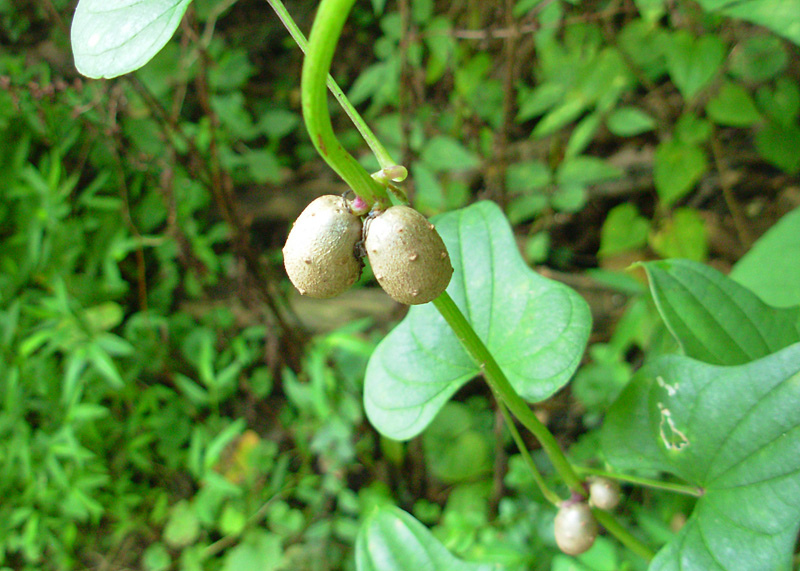
When I was growing up, I never ate yams or sweet potatoes. Nor had I even heard of them! As a Mennonite girl of European descent, such vegetables were completely unfamiliar to me. The only potatoes I knew about were plain, white ones, usually boiled, sometimes mashed, occasionally fried for breakfast.
The white potatoes we ate were also always peeled. Then, butter or cream would be added to mash them, or they would be fried in vegetable oil. If boiled, they were always smothered in gravy.
All no-no’s, according to Julia, the undisputed authority on all dietary questions in my new, Asian family.
In Julia’s home, potatoes were never peeled, as most of the vitamins and minerals are to be found in the peels. “By peeling them, you lose most of their nutritional content!” she would scoff.
Julia also taught me to eschew white potatoes for more colourful varieties, like yellow potatoes or sweet potatoes. The more colourful the vegetable, the higher the number of nutrients available, she would always say. It’s a general rule that I still follow whenever I’m in the vegetable section of our grocery store, always seeking out those with the brightest colours.
I can still remember Julia’s derisive laughter at wealthy Chinese landowners who thought the bland taste and consistency of white potatoes and white rice was superior to the nuttier and sweeter taste of sweet potatoes and whole grain rice – just because white people ate them! They left the sweet potatoes and whole grain rice for the poor, and then ended up nutritionally stunted themselves. “They were so stupid!” Julia would crow. “Greater flavour and texture means they have more nutrients, not less!”
And so began my nutritional education under her tutelage.
In Traditional Chinese Medicine, potatoes in all their variety are known to be beneficial to the spleen/pancreas. The same can be said for starchy foods in general, as they provide plenty of natural sugar and energy to the body. Beets and carrots, as well as brown rice, oats, quinoa, barley – all are foods that strengthen the spleen in Traditional Chinese Medicine. I suppose that’s why they are considered staple foods. Even herbal tonics like ginseng root, or codonopsis root – grown deep in the earth – naturally benefit the spleen. The spleen is, after all, the representative organ of the Earth element, so it makes sense that foods grown in the earth would benefit it.
Chinese wild yam is different than most other potatoes. Not a sweet potato, nor brilliantly coloured, it is nevertheless lauded in traditional Chinese medicine for its nutritive properties, and is often added into soups and stews to increase their nutrient content. Said to deeply nourish the spleen/pancreas and stomach, it is also used to improve appetite and lessen fatigue [1].
Recent scientific studies have found Chinese wild yam to be particularly useful for those with high blood glucose levels, lowering it by 10-30 mg/dL within just 10 days of use [2]. This blood sugar-regulating effect was not lost on ancient Chinese herbalists. They used it to treat “Xiao Ke” type diabetes, otherwise known as “Wasting and Thirsting Syndrome”, where patients were thin and consumptive, with difficulty retaining their weight.
Chinese wild yam doesn’t just nourish the spleen/pancreas and stomach, though. It is also moistening and tonifying to the lungs and kidneys, treating dry cough, wheezing, shallow breathing [3], as well as soreness of the knees and lower back, dizziness, light-headedness, and night sweats [4].
It can also regulate bowel movements and balance their activity, stimulating the intestines and increasing peristalsis when needed [5], while also stopping diarrhea for those whose intestines need calming [6]. It is adaptogenic that way.
The one thing Chinese wild yam does not do, however, is stimulate progesterone production. Popularized for their treatment of hot flashes in the 1990’s, wild yam creams can still be found in many health food stores. However, they are not effective as progesterone supplements because the wild yam molecule is too large to pass through the skin. When applied, wild yam creams will just stay on your skin and soften it, so they would be beneficial that way. Just don’t expect any hormone balancing activity.
If you are looking for a progesterone stimulant, we have found vitex berries to do a better job than wild yam creams. I would suggest trying our Fem-Mate tincture, which contains vitex. It has helped many women transition through menopause more comfortably by stopping hot flashes, and also improving sleep. Meanwhile, if you want to try the nourishing effects of Chinese wild yam, you can find it in our Shou Wu Plus tincture.
- 1. John K. Chen and Tina T. Chen, Chinese Medical Herbology and Pharmacology, 2004; 860.
- 2. Zhong Guo Yao Ke Da Xue Xue Bao (Journal of University of Chinese Herbology), 1991; 22(3):158
- 3. John K. Chen and Tina T. Chen, Chinese Medical Herbology and Pharmacology, 2004; 860.
- 4. Ibid, p. 861
- 5. Zhi Wu Zi Yuan Yu Huan Jing (Source and Environment of Plants), 1992; 1(2):10
- 6. Hu Bei Zhong Yi Za Zhi (Hubei Journal of Chinese Medicine), 1985; 5:35
About the Author: Rebecca Wong has a BA in English Literature from the University of Waterloo and has been working in the herbal business since 2000. She studied at the Ontario College of Traditional Chinese Medicine under respected authorities Paul Des Rosiers and Vu Le, and graduated from the East West School of Planetary Herbology under Michael Tierra. She received training as a yoga teacher at The Branches in Kitchener/Waterloo, and therapeutic yoga teacher training from the School for Somatic Soulwork under Deniz Aydoslu. She now teaches yoga for anxiety, depression and burnout at Rebecca's Restful Yoga Studio in Toronto.
